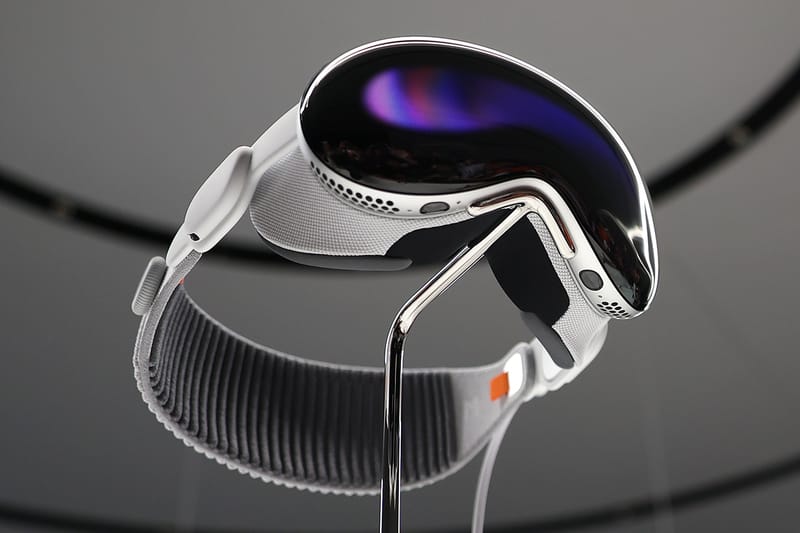It begins, as it often does, with a vision. A vision refracted through transparent lenses, where maps float beside your field of view, where a friend’s face is discreetly tagged with their name, where the whole internet hovers inches from your retinas. A vision where you glide through life with superpowers, the physical world layered seamlessly with a digital one. This dream, the dream of smart glasses, has haunted Silicon Valley’s corridors for decades. It’s been tried and failed, whispered and resurrected, hyped and ridiculed. Yet it refuses to die.
Because the truth is, few pieces of technology ever seemed as inevitable—and as endlessly elusive—as smart glasses.
To understand why, we must step back through the shimmer of history, and trace the path of human longing for eyes that see more than nature allows.
Echoes of Science Fiction
If you close your eyes and imagine the future, chances are you’re picturing it through glass. For generations, writers and filmmakers conjured visions of wearable devices that overlay data onto reality. Think of Geordi La Forge’s sleek visor in Star Trek, or Tony Stark’s heads-up displays in Iron Man’s helmet. These devices did more than inform; they transformed ordinary humans into augmented beings.
In fiction, such glasses were seamless, stylish, and profoundly empowering. They granted knowledge, enhanced senses, and—perhaps most intoxicating of all—a sense of control in a chaotic world. Our heroes were no longer blind to the hidden forces shaping reality. They saw through walls. They read vital signs. They could summon digital companions with a flick of the eye.
It’s no wonder the real world tried to catch up.
The Ghosts of Google Glass
In 2012, Google unveiled its moonshot: Google Glass. It was not sleek like Tony Stark’s displays. Instead, it perched awkwardly on the face, a metal frame with a tiny prism floating over one eye like an electronic monocle. Yet its arrival sent shockwaves through the tech world.
Glass could take photos hands-free, deliver notifications, translate signs in real time. To enthusiasts, it felt like the birth of a new computing paradigm. For a brief, glittering moment, Glass was the future made tangible. Celebrities donned prototypes on red carpets. Tech evangelists pronounced the smartphone obsolete. Google hinted this was merely the beginning.
But reality crashed in. Privacy fears erupted as users began filming people without warning. Bars and restaurants banned Glass. The term “Glasshole” entered the cultural lexicon, symbolizing Silicon Valley arrogance. Worse, Glass simply wasn’t very good. The screen was tiny, the battery weak, the applications half-baked. Within two years, Google retreated, pivoting Glass into enterprise uses.
The public had judged, and found smart glasses wanting.
Beyond the Wreckage
In the decade since, other contenders have tried—and stumbled. Microsoft launched HoloLens, dazzling developers with holograms floating in physical space. Magic Leap raised billions on a dream of “mixed reality,” only to produce bulky hardware with limited appeal.
Meanwhile, simpler devices like Snap Spectacles arrived, focusing solely on recording short videos. They were playful but shallow, more novelty than revolution.
The smart glasses landscape became littered with cautionary tales. Investors grew wary. Consumers rolled their eyes. The question began to loom: Was the dream fundamentally flawed? Would smart glasses ever escape the shadow of hype?
The Promise Reimagined
And yet…there’s a reason the dream won’t die. Because the idea itself remains intoxicating.
Consider your smartphone. It is an astonishing portal to knowledge and communication—but it is also a barrier. You have to reach for it, unlock it, glance down. Every swipe and tap demands your attention, pulling you out of the moment. Smart glasses offer something radical: to keep you present in your environment while bringing the digital world to you.
Imagine glancing at a subway map hovering discreetly in your peripheral vision. Imagine walking into a meeting, and subtle text reminds you of each person’s name and role. Imagine standing in a foreign city and seeing translated signs float beside the originals. Or seeing your fitness stats while running, without ever glancing at your wrist.
All of this promises to merge physical and digital life in ways no other device has achieved. And as the world grows more data-driven, as our digital footprints expand, the desire to see that information woven into the real world only deepens.
The Challenge of Style
Yet for smart glasses to go mainstream, they must clear one massive hurdle: fashion.
People are willing to carry large, unsightly devices in their pockets. They are not willing to wear them on their faces unless they look—and feel—beautiful. Spectacles are personal. They define your style, your identity. They are how the world sees you.
Google Glass, famously, ignored this truth. Its futuristic design screamed “I’m wearing technology,” sparking social discomfort. Snap Spectacles leaned toward fun fashion but lacked meaningful function.
The next generation of smart glasses designers understand this intimately. They know they must partner with fashion houses, with eyewear artisans who’ve spent centuries understanding human vanity and taste. A pair of smart glasses cannot simply be a gadget; it must be a fashion accessory that flatters diverse faces and personalities.
Hardware’s Invisible Revolution
Beyond aesthetics, another quiet revolution is unfolding: the hardware is finally catching up.
Displays have grown smaller, brighter, and more efficient. Waveguide technology can channel images across thin sheets of glass. MicroLEDs promise brilliant colors without devouring battery life. Cameras shrink to pinhead sizes. Batteries become denser. AI chips now fit on fingernail-sized silicon, capable of voice recognition, translation, and computer vision—all while sipping power.
And perhaps the biggest leap of all has come in connectivity. 5G, Wi-Fi 6, and soon 6G mean smart glasses can offload processing to the cloud, reducing heat and weight. Instead of cramming an entire computer into your temples, glasses can be lightweight windows to a far more powerful networked brain.
The Apple of Everyone’s Eye
If any company can make smart glasses fashionable, functional, and desirable, it is Apple. Rumors swirl persistently around “Apple Glass.” Reports suggest Apple is working on lightweight glasses offering heads-up notifications, navigation, and even immersive augmented reality. Patents hint at holographic displays and gaze tracking.
Apple’s track record is formidable. They transformed the MP3 player into the iPod. They turned smartphones into icons with the iPhone. They reimagined watches with the Apple Watch. Crucially, Apple understands not just technology, but the power of design, marketing, and brand desire.
Yet Apple is cautious. Tim Cook has spoken about AR as a profound technology but insists it must “fit into your life seamlessly.” The company has reportedly delayed its glasses multiple times, wary of releasing a half-baked product. For Apple, failure isn’t just technical—it’s existential.
Still, many in the industry believe that once Apple enters the smart glasses arena, a tipping point will arrive. Because Apple possesses something no competitor does: a loyal, status-conscious customer base willing to wear a piece of technology purely because it carries the Apple logo.
Meta’s Metaverse Gamble
While Apple moves stealthily, Meta (formerly Facebook) charges ahead loudly. Mark Zuckerberg has staked the company’s future on the “metaverse,” a virtual world blending physical and digital existence. To get there, Meta believes smart glasses are essential.
In 2021, Meta launched Ray-Ban Stories, stylish glasses that resemble classic Wayfarers but include cameras, speakers, and microphones. For now, they’re limited: they capture photos and short videos, let you answer calls, and play music. The displays, however, remain absent.
But Meta’s ambitions reach far beyond simple eyewear. They envision full AR glasses projecting virtual objects into your environment, enabling meetings with holographic colleagues, digital art installations, and persistent digital avatars.
The challenge? Power, size, and privacy. Building glasses that are thin enough to wear all day yet powerful enough to conjure 3D worlds is a herculean task. And Meta’s reputation as a steward of personal data has suffered blow after blow, fueling deep public skepticism about wearing cameras and microphones connected to Facebook.
Yet Meta presses on, pouring billions into R&D, convinced that whoever cracks smart glasses first will control the next era of computing.
China’s Quiet Surge
Meanwhile, China is quietly surging ahead. Companies like Nreal (now XREAL) and Rokid have launched smart glasses offering AR overlays, virtual screens, and lightweight designs. These devices often resemble sunglasses and tether to smartphones for processing.
In Asia, the cultural resistance to wearing technology on the face appears lower than in the West, perhaps due to existing acceptance of masks and wearable gadgets. As a result, smart glasses see faster adoption in markets like South Korea, China, and Japan.
Still, these glasses often remain niche. They attract tech enthusiasts, enterprise users, and early adopters—but not yet the broader public.
Enterprise: The Hidden Success Story
While consumer smart glasses languish, in factories, hospitals, and warehouses, they are thriving. Enterprise AR glasses have proven invaluable for hands-free instruction, remote assistance, and real-time data overlays.
Surgeons can see patient vitals without glancing away from the operating table. Technicians can receive live guidance while repairing complex machines. Warehouse workers pick items faster with visual cues projected in their lenses.
In these environments, appearance matters less than utility. Bulky visors and high costs are justified by productivity gains. Companies like Vuzix, RealWear, and Magic Leap are carving profitable niches in this sector, quietly proving that smart glasses can be transformative—even if consumers haven’t noticed.
Privacy and Social Friction
If smart glasses hope to leap from factory floors to city streets, they must grapple with a thorny problem: privacy.
Glassholes became cultural pariahs because people felt surveilled without consent. In a world already anxious about facial recognition, surveillance capitalism, and data mining, putting cameras on every face could trigger social backlash.
The solution may lie in transparency—literal and metaphorical. Clear recording indicators, robust privacy protections, and user education will be crucial. Some designs now feature tiny lights that glow when cameras activate, signaling to those around you.
But even then, subtle social dynamics remain. How comfortable will people feel conversing with someone whose eyes might secretly be scanning their LinkedIn profile? Or recording every word?
The Right Use Cases
The road to mainstream success likely hinges on discovering the “killer app”—the one feature so compelling that people endure the cost, the fashion quirks, and the privacy concerns.
For the smartphone, it was a blend of web browsing, messaging, and apps. For smart glasses, possibilities abound: immersive turn-by-turn navigation, real-time translation, sports stats floating during a live game, discreet notifications for the hearing-impaired.
And increasingly, the concept of a “virtual display” may be the stealth killer app. Imagine sitting on a plane and projecting a massive private screen in mid-air, replacing your laptop. For professionals, the ability to carry multiple giant monitors in a pair of glasses could be transformative.
Yet none of these has fully crystallized into a must-have reason for the average person to wear a computer on their face.
The Slow March Forward
Will smart glasses finally go mainstream? The answer, frustratingly, remains: not quite yet.
They will, eventually. Because history suggests the arc of technology bends toward miniaturization and intimacy. From room-sized mainframes to desktops to laptops to smartphones to wearables, our devices creep ever closer to our senses. The face is the final frontier.
But mass adoption requires a convergence:
- Hardware that is lightweight, stylish, and powerful.
- Killer apps that deliver unique value.
- Privacy solutions that foster social trust.
- Price points that don’t shock the average consumer.
Some believe we’re only five years away. Others predict decades. Yet few doubt that someday, we’ll slip on a pair of glasses in the morning and step into a world subtly layered with digital magic.
Because the dream refuses to die.
A Vision Worth Chasing
There’s a poetic symmetry in how humans have always sought to expand their vision. From Galileo’s telescope revealing moons orbiting Jupiter, to microscopes uncovering invisible life, to cameras capturing memories we’d otherwise lose—our story has always been one of augmenting sight.
Smart glasses are the next chapter in that story. A chance not merely to see further, but to overlay knowledge, art, and connectivity onto the world itself.
Yes, they’ve stumbled. Yes, they’ve embarrassed some of their creators. But technology rarely arrives fully formed. It emerges through prototypes, missteps, and cultural reckonings.
Someday, we may look back at photos of ourselves with thick, black rectangles perched on our noses and chuckle at how primitive they were. Someday, we’ll wonder how we ever navigated cities without digital arrows hovering over streets, or how we remembered names at conferences without discreet digital prompts.
Someday, smart glasses may indeed go mainstream. And when they do, the world will shimmer with new possibilities—visible only through a pane of glass.
Until then, the dream persists, reflected in every polished lens, waiting for the moment when technology, society, and desire finally align.






